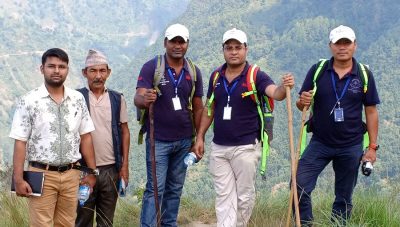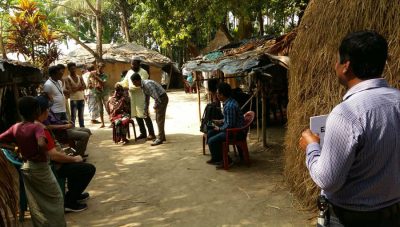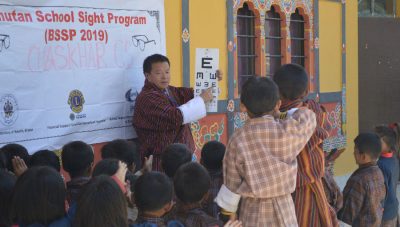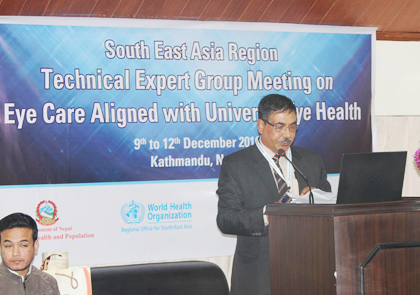Join a powerful, unprecedented alliance for better eye health for all.
Join IAPB-
Choose an alternate language here
The year 2019 was crucial for our sector. It is the year before the end of the global campaign of IAPB and WHO Vision 2020 The Right to Sight. It is also the last year of WHO Global Action Plan 2014 – 2019. The Vision 2020 era is ending but our aspirations and global challenges in eye health still persist. In view of this, IAPB SEA continues to implement and monitor the progress of WHO GAP 2014-2019 and provide technical, programmatic and advocacy support to the countries of the region. As per the objective of the GAP, our focus continued on evidence generation so that we can assess progress and support and advocate the formulation of national eye health policies and plans. In this year, our collaboration with WHO, IAPB members and ministry of health in achieving GAP objectives was also successful. Some highlights of our achievement this year are appended below:
 After 1981 and 2010 blindness surveys another survey is happening in 2019. IAPB’s technical supervision and examples of successful implementation of RAAB surveys in the region was a great help to mobilize funds for this Nepal RAAB survey. A total of 7 RAABs are being carried out (some completed) to cover the whole nation. The cost of this national survey is budgeted at approximately USD 200,000. It has been supported by many IAPB members: Seva Foundation, The Fred Hollows Foundation, CBM, Eye Care Foundation, Swiss Red Cross, Norwegian Association for Blind and Partially Sighted (NABP), and the Nepal Government. We are expecting the final result in the first quarter of 2020. This will provide crucial information for the country and help in evidence-based eye health planning beyond 2020.
After 1981 and 2010 blindness surveys another survey is happening in 2019. IAPB’s technical supervision and examples of successful implementation of RAAB surveys in the region was a great help to mobilize funds for this Nepal RAAB survey. A total of 7 RAABs are being carried out (some completed) to cover the whole nation. The cost of this national survey is budgeted at approximately USD 200,000. It has been supported by many IAPB members: Seva Foundation, The Fred Hollows Foundation, CBM, Eye Care Foundation, Swiss Red Cross, Norwegian Association for Blind and Partially Sighted (NABP), and the Nepal Government. We are expecting the final result in the first quarter of 2020. This will provide crucial information for the country and help in evidence-based eye health planning beyond 2020.


We also supported fund mobilization for Bhutan Government to carry out Bhutan School Sight Programme. Approximately 170,000 school children underwent vision assessment and refraction for those who had vision impairment due to URE. Along with LCIF and Mission for Vision, WHO SEARO also supported this effort. In this project also Essilor provided free glasses for those who need it.
• Our collaboration with Operation Eye Sight Universal (OEU) continued, extending support to develop a national plan and its implementation in Sri Lanka and Maldives.
• IAPB Regional Planning meeting successfully analysed the eye care services of SEA countries.
• In collaboration with WHO SEARO, IAPB SEA organized Regional Technical Expert’s Meeting from 9 to 12 
Image on top: An elderly Tibetan nomad woman on the Changthang, Ladakh, India receives a pair glasses/ Photo credit: Julie-Anne Davies for #VisionFirst photo competition